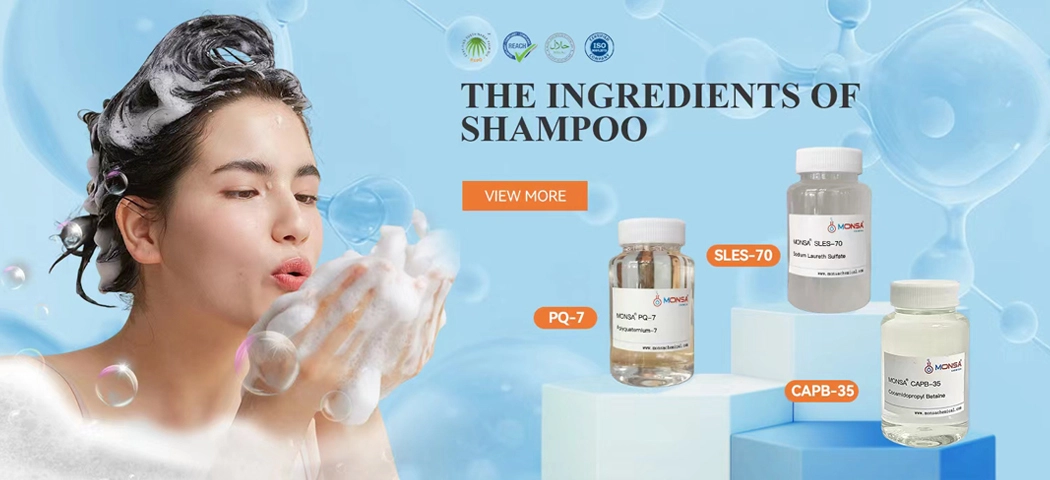What Is Cationic Surfactant?
Different from anionic surfactants, cationic surfactants carry a positive charge on their hydrophilic head group, which allows them to be used in anti-static products such as fabric softeners and hair conditioning agents. The positive charge polar head groups deposit on the negatively charged surfaces of hair or textile fibers. In addition, the known cationic surfactants have the beneficial property of disrupting bacterial cell membranes, making cationic surfactants useful as antimicrobial agents, commonly found in hard surface cleaners and disinfectants.
For most formulations involving cationic surfactants, acidic solutions are preferred as this will maintain the positive charge on the cationic structure. When developing new formulas, it is important for formulation designers to know which types of surfactants can be mixed together. Unfortunately, due to the positive charge exhibited by cationic surfactants, formulation designers are best advised not to combine cationic and anionic surfactants in a formulation unless they want a sticky or viscous uneven substance.
What Is Anionic Surfactant?
Anionic surfactants carry a negative charge on their hydrophilic head, providing excellent cleansing properties as they have the ability to bind to positively charged particles (such as dirt and oil), lift these particles, and suspend them with superpower in a micellar structure. Once in the micelle, dirt and stains can be cleared with a water solution and flushed down the drain, leaving your home and workplace clean and clear.
Anionic Surfactants List
Some common examples of anionic surfactants are alkyl ether sulfates, benzyl sulfonates, and phosphate esters. It is known that anionic surfactants foam upon agitation, but this foam is not directly related to their cleaning ability, as compared to non-ionic surfactants, anionic surfactants do not act much on removing or emulsifying oil. Specifically, anionic surfactants containing phosphate ester portions are common products, they are effective coupling agents, excellent water-soluble aids, and stable and soluble under alkaline conditions. These surfactants are widely used as compatibilizers in agricultural chemicals and corrosion inhibitors in the oil and gas industry.
Typically, anionic surfactants are best used in alkaline solutions, as if protonated by acidic solutions, some anionic surfactants will precipitate from the solution. It is preferable to know that all anionic surfactants are compatible with non-ionic surfactants in the formulation, enabling chemists to mix and match from a wide variety of potential auxiliary surfactants. However, in the case of "viscosity" (as mentioned earlier), it is best to avoid mixing anionic and cationic surfactants.
Product Name | INCI Name | CAS No. | Appearcance | Content(%) |
MONSA® SLES-70 (1/2/3 EO) | Sodium Laureth Sulfate | 68891-38-3 | Colorless or yellow pastes | ~70 |
Sodium Laurly Ether Sulfate | 68585-34-2 |
| 9004-82-4 |
| 1335-72-4 |
MONSA® SLS-29 | Sodium Lauryl Sulfate | 151-21-3 | Colorless or light yellow viscous liquid | 28~30 |
|
MONSA® SLS-92 (Needle) | White or lightly yellow or colorful, needle solid | ≥92 |
|
MONSA® SLS-92 (Powder) | White or lightly yellow, powder solid | ≥92 |
|
MONSA® ALES-70 (2/3EO) | Ammonium Laureth Sulfate | 32612-48-9 | Colorless or light yellow gel paste | 68~72 |
|
MONSA® ALS-70 | Ammonium Lauryl Sulfate | 2235-54-3 | Colorless or light yellow gel paste | 68~72 |
|
MONSA® AOS-35 | Sodium Alpha-olefin Sulfonate | 68439-57-6 | Colorless or yellow clear liquid | ~35 |
|
MONSA® AOS-92(Powder) | 68439-57-7 | White or light yellow powder | 90~94 |
|
MONSA® TIPA | TIPA Laureth Sulfate | 174450-50-1 | Colorless or yellow, viscous liquid | ≥80 |
|











